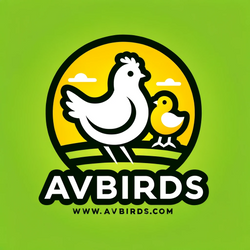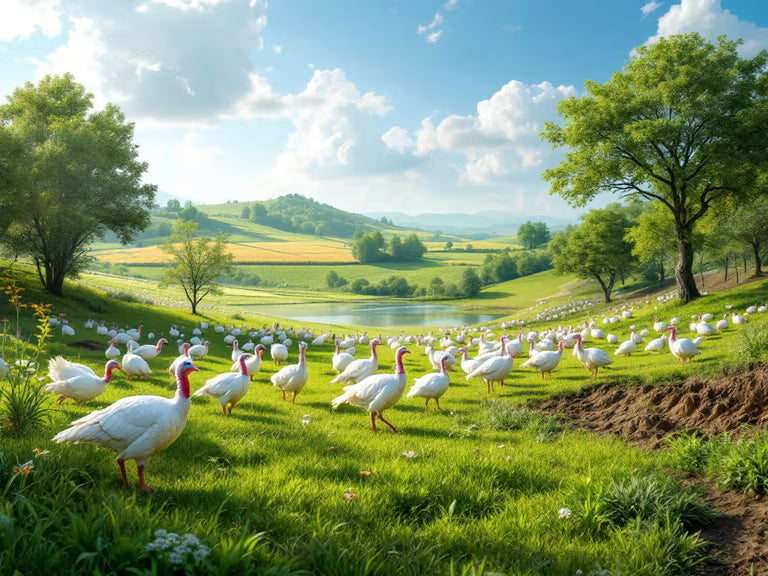Intro
Picture this, you’re planning a California Thanksgiving and thinking about raising or buying a live turkey. You love the idea of a fresh bird but you also care about how it affects your local ecosystem. In this guide you’ll learn all about the live turkey impact on the environment and simple steps you can take to keep your holiday celebration both memorable and eco-friendly.
You’ll see how water use, feed efficiency, waste management, and carbon footprint matter when you raise or source a bird. Plus practical tips on choosing the right production system, recycling litter, and trimming emissions so your feast does more good than harm.
Understand Environmental Impact
Water Consumption Impact
Turkeys need plenty of fresh water to grow strong and stay healthy. On average a full-grown bird drinks up to half a gallon of water each day. Monitoring that intake helps you spot health issues early and keeps waste from overflowing into streams or storm drains (Hybrid Turkeys).
- Place waterers at bird height to reduce spills
- Check drinkers twice daily for cleanliness
- Record daily usage to spot sudden drops or spikes
For more on feeding and watering, see our live turkey feeding guide.
Feed And Energy Use
Feed accounts for the biggest chunk of energy use and global warming potential in turkey production. Advances in genetics and feed efficiency mean modern birds reach market weight using fewer resources (National Turkey Federation). Still, your choice of feed and how you store it can add or subtract from your carbon footprint.
- Store grains in sealed bins to prevent spoilage
- Consider feeds fortified for nutrient absorption
- Rotate older feed first to cut waste
Check out our tips on live turkey housing requirements to keep feed fresh and dry.
Compare Production Systems
Conventional Vs Pasture-Raised
Conventional barns use climate control, artificial lighting, and ventilation to maximize growth. That infrastructure consumes energy but also limits disease risks. Pasture-raised birds roam outdoors, lowering power needs and avoiding antibiotics, but they need more land and predator protection. Pasture systems often support biodiversity and soil health by mimicking natural ecosystems (The Maker’s Meadow).
Organic And Regenerative Methods
Organic feeds can bump up carbon and energy use compared to non-organic mixes, according to a 2014 study on Christmas turkey systems (The Poultry Site). Regenerative approaches—like integrating crops and livestock—help capture carbon in the soil and boost overall farm resilience. Swapping some soybean meal for local rapeseed or sunflower meal didn’t raise impacts significantly, so you can shop locally with confidence.
Manage Waste Responsibly
Litter Recycling Practices
Used turkey litter is rich in nitrogen and phosphorus, making it a powerful organic fertilizer. Applying it to your fields can cut the need for synthetic chemicals, but over-application risks nutrient runoff into waterways. Work with a crop adviser to match litter nutrients to your soil’s needs (National Turkey Federation).
Manure For Power Generation
Burning dried turkey manure for energy reduces acidification and eutrophication potential, thanks to lower ammonia emissions. It also offsets fossil fuel use, improving primary energy metrics when compared to spreading manure on fields (The Poultry Site). If you have the setup, consider collaborating with a local bioenergy plant.
Consider Carbon Footprint
Thanksgiving Turkey Emissions
A 16-pound turkey can generate about 34.2 pounds of CO2 from farm to table. That’s roughly the same as baking a spread of side dishes (One Green Planet). Across the U.S., that adds up to over 786,000 tons of CO2 each Thanksgiving.
Reducing Leftovers Waste
About 35% of purchased turkey ends up uneaten, boosting environmental impacts by 54% due to landfill methane. Plan portions carefully, freeze extra meat for later, or donate trimmings to a food bank—your local live turkey donation options after thanksgiving can help.
Choose Sustainable Practices
Source Local Birds
Shorter transport routes mean lower emissions. Seek out a live turkey farm in california or check live turkey availability in california to find a nearby flock. You can also browse Thanksgiving turkey listings at AV Birds for local poults.
Adopt Technology And Genetics
Solar-powered barns, automated monitoring systems, and precision water management all cut resource use while keeping birds healthy. Improved genetics let your turkeys grow on fewer pounds of feed per pound of meat, shrinking both energy use and greenhouse gas emissions (National Turkey Federation).
Key Takeaways
- Track water use and feed efficiency to spot waste or health issues early
- Compare conventional, pasture-raised, and organic systems to match your values
- Recycle litter carefully and explore manure-to-energy options
- Plan turkey size and leftovers to slash carbon and methane output
- Source local birds, use renewable tech, and lean on genetic advances
Your turn, California turkey enthusiasts: pick one change—maybe compost that litter, or snag a pasture-raised bird from a nearby farm—and see how it lightens your holiday impact. Have a tip or question? Drop it in the comments below so everyone can learn.

